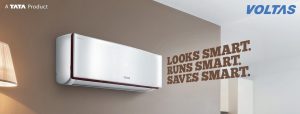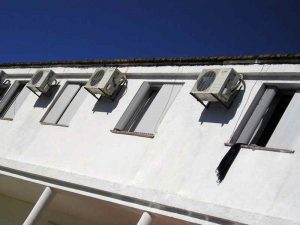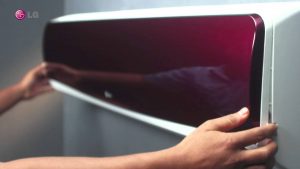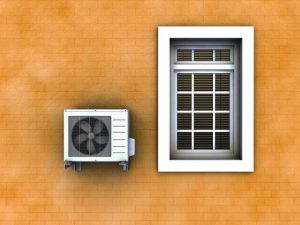Types of Inverter Compressors in Different Brands of Air Conditioners in India
The compressor inside the AC is the heart of the cooling appliance. Remove compressor and your AC would no longer be able to produce even a single gust of cool air. Inverter is arguably most important innovation in air conditioning industry that have revolutionize the working of compressors. More and more AC models released every year are coming with inverter technology. In this article we will tell you all different types of inverter technologies that are presently offered in the market. But before that we need to know bit about compressors and inverter technology.
Compressors
The compressor is used to expel heat out of the room by compressing refrigerant coming from the evaporator of the AC. Think of compressor like your heart—as your heart pumps blood throughout the body, the compressor pumps refrigerant through the air conditioning system. Refrigerant is like blood—just as blood absorbs and circulates oxygen throughout the body, the refrigerant absorbs heat from the room and circulates it outside in the surrounding.
Inverter Technology
Inverter in arguably the greatest invention in ACs in recent times. Inverter compressor is basically the usage of special BLDC motors which can vary the speed of the compressor in accordance with the requirement. In other words, with inverter in place, compressors can run at a different speed according to the cooling requirement and not always with maximum speed. Think of inverter compressor as car accelerator. When compressor needs more power, inverter gives more power. When it needs less power, inverter gives less power. With inverter technology, the compressor is always on but draws less power or more power depending on the temperature of the incoming air and the level set in the thermostat. The speed and power of the compressor are adjusted appropriately. This allows in more precise cooling and more importantly significant energy savings.
ACs without inverter technology used to come with reciprocating type compressor. In a reciprocating compressor, refrigerant compression used to happen by up and down movement of the piston. Though reciprocating type compressors have good pressure-generating capacity, they have low operational speed and high maintenance cost. Nowadays most of ACs which come with inverter technology come with rotary compressors instead of reciprocating ones. Rotary inverter compressors contain a shaft with multiple blades attached to it. This bladed shaft rotates inside the cylinder enclosure pushing refrigerant gas through the cylinder and compressing it simultaneously.
Though the concept of variable-speed compressor remains the same, different manufacturers use some slight variations to differentiate their inverter AC offering. Let us look into the different types of inverter compressor that are there in the market and understand the nuances amongst them.
Dual/Twin Rotary Inverter
Improving the design of inverter compressors further, many AC brands are manufacturing ACs with two rotary compressors instead of one. LG markets markets it as a dual inverter, Toshiba and O’General calls it twin inverter, whereas Blue Star brands it as dual inverter rotary compressor.
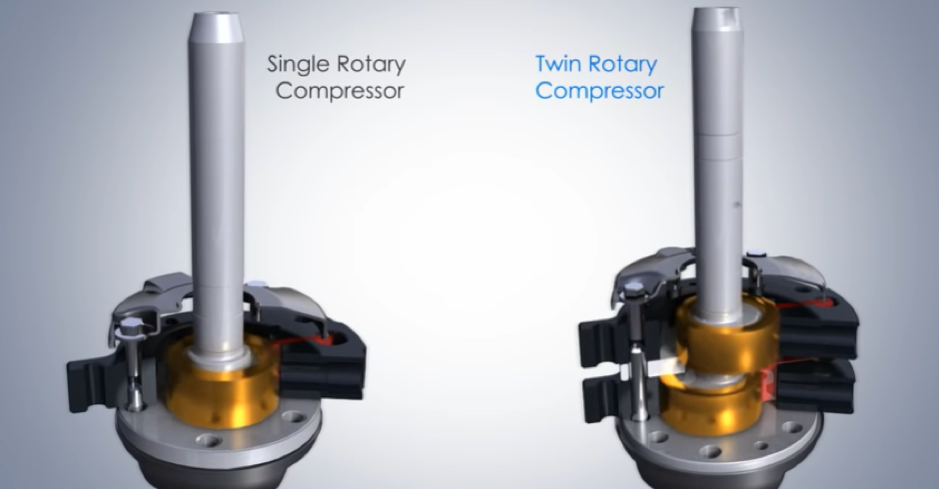
Dual inverter ACs are a step ahead than ordinary inverter ACs. They often come with more advanced BLDC motor that helps in achieving a much wider range of operating frequency which helps in faster and precise cooling.
Now in ordinary inverter ACs there is the usage of variable speed single cylinder rotary compressor which operates on single rotation single compression principle. But this design is observed to generate a lot of vibration and thereby increase in noise levels because of shaft whirling during operation of AC especially at full load.
But by using dual rotary compressor design, two rotary compressors are operated with a phase difference of 180° in their mutual compression timing which results in much more stable operation. This not only improves the rotational balance but also bolsters the compression torque making it possible for the compressor to operate from just 700 RPM to a peak frequency of 8000 RPM. That’s why dual inverter ACs are able to achieve variable tonnage. So, a 1.5 ton AC coming with dual rotary inverter technology can vary tonnage from as low as 0.3 ton to as high as 1.8 ton.
8-pole Triple Inverter
Taking dual rotary compressor design to next level Samsung offers 8-pole triple inverter technology which helps in cools 67% faster cooling, operations even in 68oC and 69% more energy savings than conventional air conditioners. As opposed to mainstream 4-pole inverter, Samsung premium inverter AC uses 8-pole inverter which reaches the required temperature faster and with lesser vibrations.
Expandable Inverter
New models of ACs from Hitachi come with expandable inverter technology specially designed for tropical Indian climate. Expandable inverter AC uses Seamless Cascade Vector DC Inverter System which gives better performance than any ordinary inverter AC.
Main philosophy behind expendable inverter design is that the AC expands its capacity whenever there is changes in either indoor or outdoor ambient temperature. It delivers comfortable cooling even in the adverse climatic conditions by expanding its cooling capacity and minimizing time to reach a respective cooling temperature. Moreover, it also helps in cutting down the humidity level inside the conditioned room. To improve coefficient of performance in full load as well as part load conditions, Hitachi has also introduced a new concept called Dual Flow Expansion Technology (DFET). All these additions in the Hitachi’s expendable inverter compressor optimizes peak performance to give perfect cooling even in the extreme temperatures of 52oC.
Intellisense Inverter
Whirlpool ACs offer smart Intellisense inverter which adapts to the cooling needs using smart sensor network. Sensors can sense number of users, outdoor temperature and can make inverter run accordingly for optimum cooling. They also significantly limit the electricity consumption which translates into energy savings. Intellisense inverter delivers silent cooling with a low noise level of 37 dB.
Scroll Inverter Compressor
Daikin is experimenting with scroll inverter compressor. There are two scrolls, one of which is fixed and other orbits around the fixed one through the swing link in the models coming with this type of inverter compressor. During the compression, the orbiting scroll pushes refrigerant towards the centre causing a reduction in the volume of gas. It is subsequently discharged to the condenser by using center port. The biggest advantage of scroll compressors is that they require fewer moving parts and minimal torque variation.
Conclusion
To conclude its highly recommended that you always opt for an AC which comes with inverter technology. Even when going for inverter it’s better to have twin/triple rotary compressors instead of one. Now with a good grasp about the compressors, your job of selecting a right AC has become more simplified. To know more about other AC technologies click here.
About the Author:
Hussain Kanchwala is an Electronics Engineer from University of Mumbai. As an Analyst at BijliBachao he keeps a tab on latest technologies in gadgets and appliances, tracks businesses of white goods companies and monitors the consumer behavior. With a background in engineering, penchant for detail, and flair for writing he regularly write reviews about brands and their products. More from this author.

